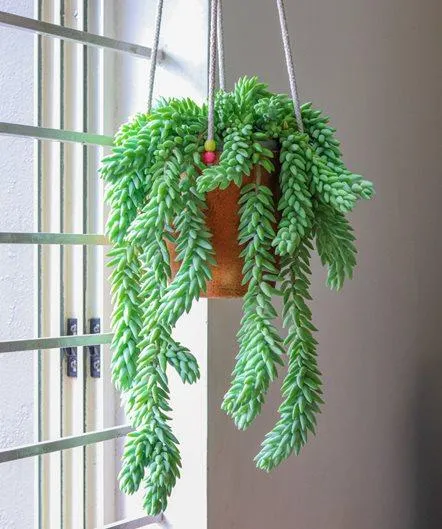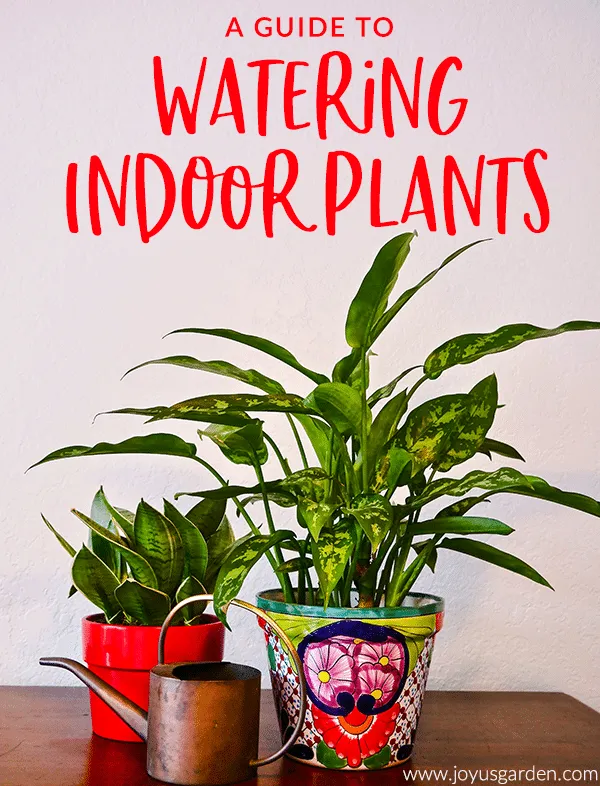The Complete Guide to Hanging House Plants
If you’re looking to add some greenery to your home but have limited floor space, hanging house plants are the way to go. They allow you to utilize vertical space like walls, ceilings, and shelves to display plants. In this article, I will cover all the important aspects of caring for hanging plants so you can choose the best ones and keep them thriving for years to come.
Choosing the Right Hanging Plants
There are many beautiful hanging plant varieties to select from. Here are some of the most popular and easy to care for options:
- Pothos – Extremely hardy and forgiving, pothos is a great choice for beginners. Its trailing vines look lovely hanging in baskets or pots. Golden, marble queen, and jade pothos varieties are commonly found.
- English ivy – A classic hanging plant with dark green heart-shaped leaves. English ivy trails long stems that look beautiful spilling over the edges of pots. It thrives in low to medium light.
- Spider plant – These plants produce gorgeous dangling spiderettes on long stems. Spider plants are tough as nails and excellent at purifying indoor air. Babies will grow at the base to repot or share.
- Philodendron – With leathery leaves in variegated heart, oval or round shapes, philodendrons come in many varieties. Make sure to choose one suited to your light conditions like philodendron hederaceum for lower light.
- Wandering Jew – This trailing plant features colorful leaves and grows quickly. Its cascading foliage looks stunning hanging in window baskets. Wandering Jew thrives in medium to high light.
Analyze your space and choose hanging plants with textures, patterns, and colors that appeal to you. Consider light and water requirements too before selecting varieties.
Substrate and Containers
Hanging plants need soil or substrate to anchor their roots and retain moisture. A good choice is a soil-less potting mix specifically for houseplants. It drains well while retaining moisture and nutrients.
As for containers, anything with drainage holes that allows excess water to escape will work. Popular options include hanging baskets, mesh pots, macrame hangers, ceramic pots, and wooden crates. Just ensure the container is sized appropriately for the plant.
Lighting Needs
Light is essential for plant growth. Most hanging plants prefer medium to bright, indirect sunlight. Place them in east, west or south facing windows. Some low-light options are pothos and philodendron for north windows. Use a light meter app to gauge the lighting in your space if unsure.

In low-light areas, supplement with grow lights 2-4 hours daily. Aim for around 1500-3000 lumens of brightness at the plant level. Too much direct sun can scorch foliage, so gradually acclimate plants or use a sheer curtain.
Watering Practices
Over or underwatering causes most houseplant issues. Feel the soil before watering and only water when the top inch becomes dry. Then provide thorough, room temperature water until it drains freely from the holes below. For hanging plants, water until it runs out the bottom for 10-15 seconds.
Mist plants weekly too as high humidity helps their growth. Your watering frequency may vary seasonally and with plant type – succulents like less water than pothos. Evaluate signs like wilting leaves to gauge individual plant needs.
Fertilizing Schedule
During the growing seasons of spring and summer, feed hanging plants monthly with a diluted, water-soluble houseplant fertilizer. This provides nutrients to sustain healthy growth. Read package instructions and use at half the recommended strength to avoid burning roots.
Fertilize less in fall and winter when plants are semi-dormant. Too much fertilizer when light levels are low can cause ugly yellowed leaves.
Pruning and Propagation
Prune off any damaged, diseased or dead plant parts with sterilized pruners to keep plants looking tidy. You can also prune to control size or shape trailing vines.
Cut 4-6 inch segments, remove lower leaves, and root the cuttings in water. Once roots develop from the nodes, transplant the babies to soil.

Propagation allows growing full replacement plants for free over time. Many hanging varieties like pothos, spider plant and wandering jew readily root from stem cuttings.
Pest and Disease Management
Periodically inspect hanging plants for any signs of pests like fungus gnats, aphids or mites. Isolate immediately if spotted and treat appropriately based on the pest. Q-tips dipped in alcohol work well for wiping individual pests.
Preventive measures also guard against diseases. Provide good air circulation, moderate watering, and quarantine new plant arrivals for signs of illness before mixing them with others. This creates a healthier indoor plant environment overall.
displayed hanging house plants looks great!
With some TLC following these ultimate care instructions, your displayed hanging house plants will look great for many years. Let me know if you have any other questions! Happ plant hanging!
Hanging House Plant Care
| Plant | Light Needs | Water Needs | Soil |
|---|---|---|---|
| Pothos | Low to Bright Indirect Light | Allow Top Inch of Soil to Dry Before Watering | Potting Mix |
| Philodendron | Low to Bright Indirect Light | Water When Top Inch of Soil is Dry | Potting Mix |
| Spider Plant | Bright Indirect Light | Allow Top Inch of Soil to Dry Before Watering | Potting Mix |
| Chinese Evergreens | Low to Bright Indirect Light | Water When Top Inch of Soil is Dry | Rich, Well-Draining Potting Soil |
| Peperomia | Low to Bright Indirect Light | Allow Top Inch of Soil to Dry Before Watering | Potting Mix |
FAQ
-
How much sunlight do house plants need?
Most house plants need medium to bright indirect sunlight. Direct sun can scorch their leaves. Basically, aim to give them as much light as a sunlit spot indoors without letting the sun beams directly hit. On the other hand, too little light and they’ll become leggy and lean towards the window.
-
“Will my plants be okay if I don’t water them for a week?”
Perhaps you can get away with not watering for a week, but some plants kind of want a drink more often than that. It really depends on the plant type and indoor conditions. During hot or dry weather, even a week can be too long to go dry. The soil should partly dry between waterings, but not completely. Feel the soil before watering. Is it totally bone dry? Consider giving it a sip of water then.

-
“How do I know if my plant needs fertilizer?”
There are a few signs that your plant may need nutriments. Yellowing lower leaves can mean it’s lacking nutrients. Also, spindly growth or fewer flowers and fruits are indications. You can refer to the care instructions that came with the plant too. As a general rule, most folks fertilize during the active growing season in spring and summer. But maybe go light on the fertilizer if you’re just kind of an average plant parent.
-
“What’s the best way to remove brown tips from my plant leaves?”
Brown tipping is usually due to dry air or overwatering. The latter or underwatering can also cause leaf drop. To avoid this, aim for a humid environment – you can use pebble trays or a humidifier. And water when the topsoil is slightly dry. As for removing existing brown tips, just snip them off with clean scissors. It won’t harm the plant. Out of sight, out of mind, right?
-
“My plant has spots – what’s wrong with it?”
Spots can have different causes. Like brown spots may mean too much direct sun or dry air. Or yellow spots could point to pest issues like mites. White spots are commonly from mineral deposits in hard water. Get close and examine the spot type. Check under leaves too. Then you can look it up or ask at the garden store. Amazingly, many plant diseases look alike. Perhaps a photo can get you a more accurate diagnosis.
-
“Help, my plant has an infestation! What do I do?”
Stay calm – deep breaths! First, isolate the infested plant from others ASAP. Remove any bugs you see with an alcohol-soaked cotton ball. Spray the whole plant thoroughly with a diluted insecticidal soap or neem oil. These are organic choices. You can also try a systemic pesticide like imidacloprid for stubborn pests. Be sure to follow label directions carefully. With some TLC, your plant should recover. Remember – don’t lose hope!
-
“Should I repot my plant if it’s not growing well?”
It depends. Check the roots – if they’re cramped and circling the inside of the pot, it’s a sign the plant needs more elbow room. A larger pot with fresh soil can work wonders. But if other problems like too much or too little light/water are the real issue, repotting won’t fix it. The roots may even get disturbed. In that case, try adjusting care first before changing the pot. I guess it’s kind of a judgment call based on root and environmental conditions.
-
“My plants always die. Am I just no good with them?”
Don’t be so hard on yourself! Caring for houseplants is a learning process. We’ve all lost a plant or two along the way. It takes practice to understand each one’s needs. Maybe try some low-maintenance succulents or pothos to start. Don’t overwater! Read labels, look up care tips, and talk to plant pros for advice too. Gardening is part science and part art. With persistence, I’m certain you can keep plants happy and thriving. Stay positive – you’ve got this!

